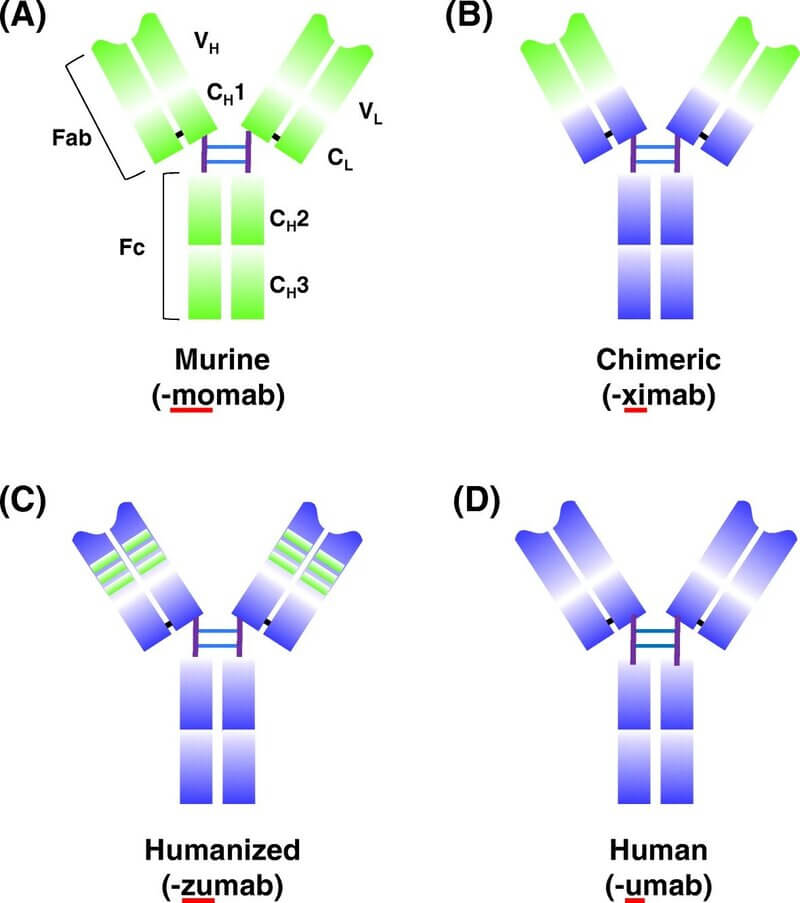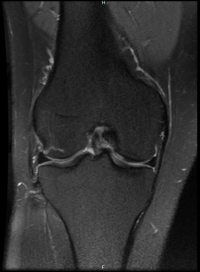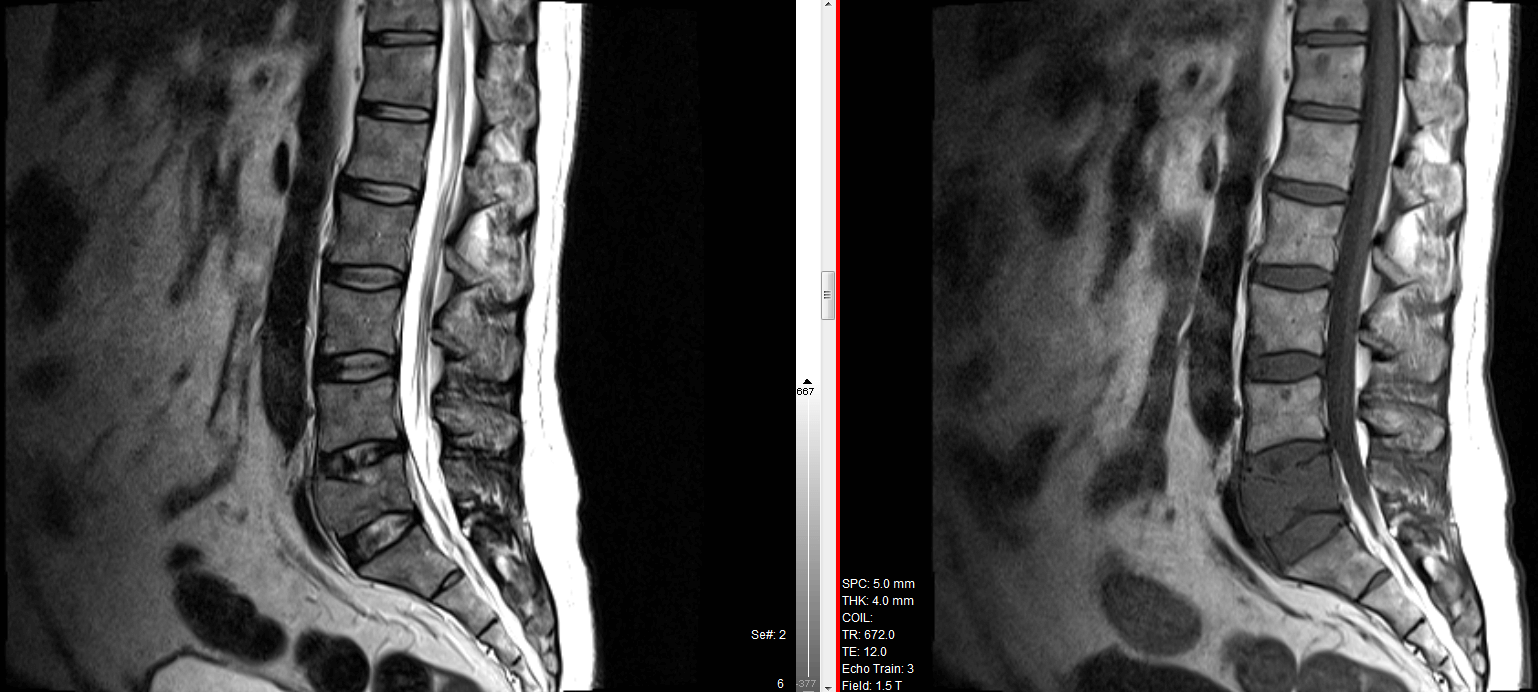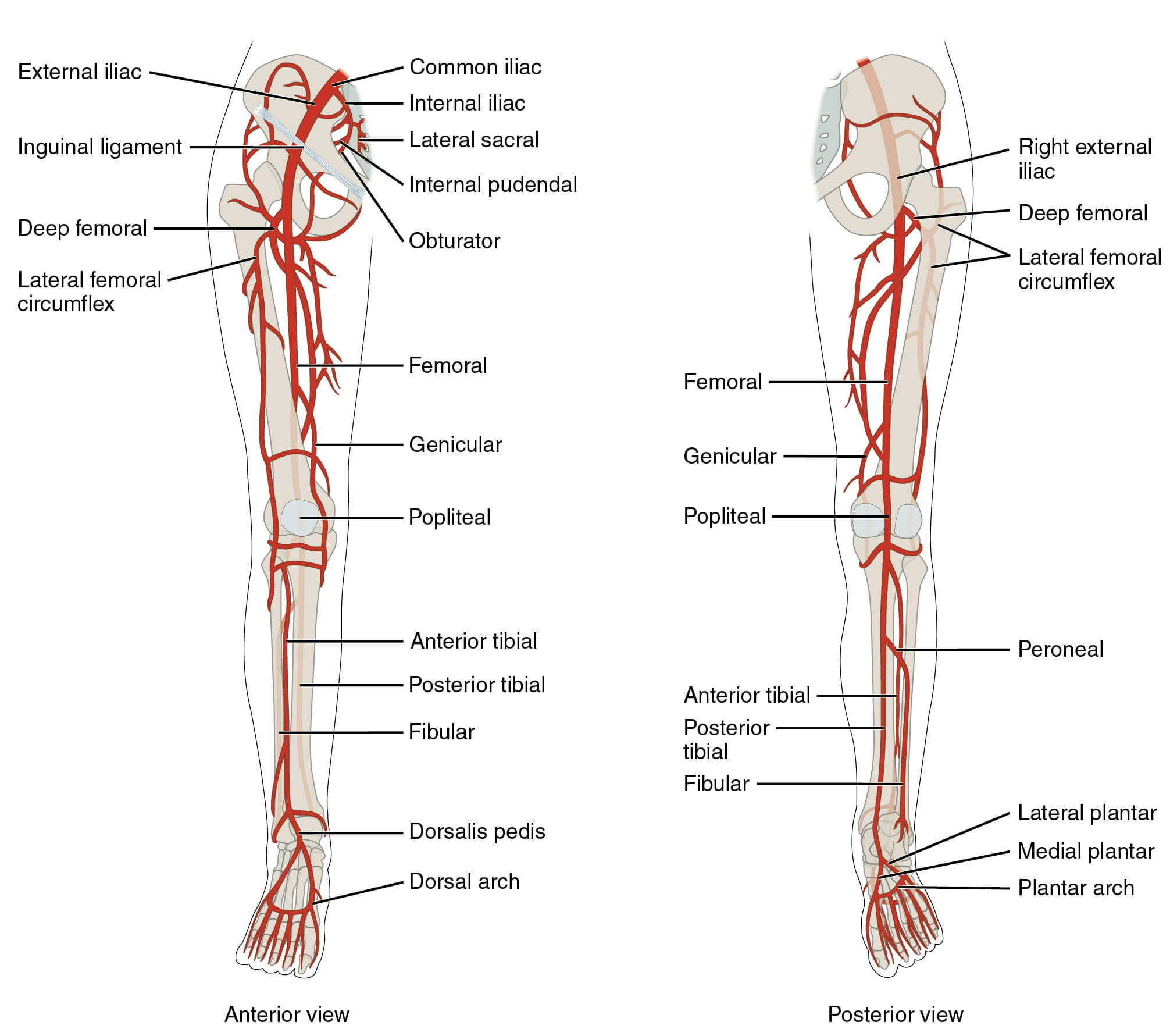Antigen = Anti + Gen = Antibody + Generation
Any substance that is capable of causing an immune response thereby causing the production of antibodies is called an antigen.
Generally antigens are foreign substances (heteroantigens) but at times they can be body’s own proteins (autoantigens). Foreign antigens are generally proteins or protein fragments or polysaccharides but can also be lipids, nucleic acids and other substances. Bacteria and viruses contain antigens. Other examples of antigens include substances in snake venom, certain proteins in foods, components in blood of other people.
Antibody
Antibody (abbreviated as Ab) is a substance (protein) produced by a B cell in response to an antigen. The function of an antibody is to eliminate the antigen from the body. Antigens are also called Immunoglobulins (abbreviated as Ig).
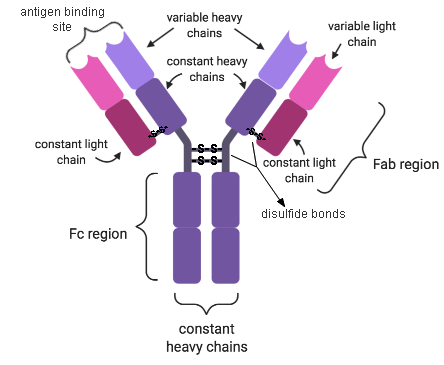
Antibodies are in the shape of letter “Y”. Each unit contains 2 identical copies of a heavy chain and 2 identical copies of a light chain. (chains are called light or heavy due to their high or low molecular weight).
When an antigen invades the body, the immune system triggers various mechanisms to eliminate the antigen. One of them is antibody production. Antibodies are produced by B cells or B lymphocytes. Once an antigen binds to a B cell it stimulates the B cell to divide and mature into Plasma Cell. The plasma cells then secrete antibodies.
Plasma cells are differentiated B-lymphocyte white blood cells capable of secreting immunoglobulin, or antibody. Plasma cells develop from antigen-activated B lymphocytes in secondary lymphoid organs, such as the spleen and lymph nodes, after antigenic stimulation.
Histology – Plasma Cells
Mature plasma cells are much larger than B cells, and can secrete large amounts of antibodies. During their lifespan of 2 to 3 days, they continuously synthesize and secrete antibodies that have specificity for the antigen that stimulated the plasma cell precursor to proliferate and differentiate. Estimates are that a single plasma cell can secrete hundreds to thousands of antibody molecules per second.
Mode of Action of Antibodies
Antibodies attack antigens by binding to them. This can then work in several ways.
- Antibodies can neutralise the antigen by changing their chemical composition.
- Antibodies can mark the antigen and make them susceptible to get phagocytosed by phagocytes.
- Antibodies can also render a microbe immobile and thus limit their ability to invade or enter cells.
Types of Antibodies (Ab) or Immunoglobulins (Ig)
Ig have 5 classes. IgG, IgA, IgM, IgD, IgE.
IgG – IgG is the most abundant Ig in the blood. These comprise up to 80% of antibodies in blood. These have 4 subclasses IgG1, 2, 3, 4. IgG can also cross placenta. These are also secreted in breast milk and then travel in blood to provide immunity.
IgA – IgA is found in mucosal membranes. High levels of IgA are present in saliva, tears, and breast milk. It acts as a neutralising antibody (NAb). A NAb binds to an antigen in such a way that it blocks infection.
IgM – These are the first antibodies to be produced by a plasma cell in response to an infection. 5 Y shaped units combine to form a larger unit which has 10 antigen binding sites. It acts by causing agglutination or clumping together of bacteria.
IgD – IgD are present on most B cells but very little is released in blood. It is disputed as to what function these perform.
IgE – IgE is present in low concentration in blood. Most IgE is bound to its receptors on mast cells and basophils. When antigens attach to these cells bound IgE receptors, they cause the cell to release histamine which is involved in allergic reactions. They also protect against parasitic infections.
Monoclonal Antibodies
These are also called "Biologics" as they are made in a living organism.
Monoclonal antibodies (mAbs) are produced using tissue culture techniques. First of all an animal, usually a mouse is injected several times with a specific antigen. The animal then produces antibodies to the antigen. B cells are then removed from the spleen of the immunized animal. Normal B cells do not have the ability to proliferate forever. Therefore they are fused with cancerous B cells called myeloma cells. The resultant cells are called hybridoma cells. Function of B cells is to produce antibodies.
The extracted cells are then placed in a selective medium that allows only the hybridomas to grow. Unfused myeloma cells and B cells die off. The hybridomas, are then screened for the desired monoclonal antibodies. Those producing the desired monoclonal antibodies are grown in tissue culture. The culture medium is harvested periodically and monoclonal antibodies are purified from the medium. The whole process is very time-consuming.
At this stage the monoclonal antibodies are still mouse antibodies. Using genetic engineering the antibodies are modified for human use (mouse antibodies cannot be injected repeatedly into humans, because the immune system will recognize them as being foreign and will respond to them with neutralizing antibodies). The variable regions of the mouse light and heavy chain genes are ligated to human constant regions, and the chimeric gene is then transferred into a host cell. This allows production of a monoclonal antibodies that is mostly “human” with only the antigen-binding site being of mouse origin. More techniques have now been developed to produce fully human recombinant monoclonal antibodies.
HmAbs (human monoclonal antibodies) can be produced by several methods, including immortalization of B cells with Epstein–Barr virus, and the production of B-cell hybridomas, humanization of antibodies from other species, using phage display libraries or generating antibodies recombinantly from isolated single B cells.
The conventions used in nomenclature of monoclonal antibodies indicate whether they are mouse (-omab), chimeric (-ximab), humanized (-zumab) or fully human (-umab).
Common MAbs
Secukinumab - It is an human monoclonal antibody which is licensed for treatment of ankylosing spondylitis, psoriatic arthritis and plaque psoriasis. It is a selective inhibitor of interleukin 17A. IL17A is a pro-inflammatory cytokine. It is given as a subcutaneous injection. 300mg is the dose and an injection costs £1200.
Tocilizumab - humanized monoclonal antibody against the interleukin-6 receptor. Used in Rheumatoid Arthritis. Given IV or by subcutaneous injection.
Adalimumab - fully human IgG1 monoclonal antibody that specifically binds to tumor necrosis factor (TNF)-alpha. Given subcutaneously. Approved for use in rheumatoid arthritis, juvenile idiopathic arthritis, ankylosing spondylitis, inflammatory bowel disease, and both the skin and joint manifestations of psoriasis.
Infliximab - a chimeric monoclonal antibody which inhibits TNF alpha. Used in Crohn's, Ulcerative Colitis, Rheumatoid arthritis, Psoriatic arthritis, Axial spondyloarthritis, including Ankylosing spondylitis.
Denosumab - a human monoclonal antibody that inhibits osteoclast formation, function, and survival, thereby decreasing bone resorption. It targets and binds with high affinity and specificity to RANKL, preventing activation of its receptor. As a result, osteoclast recruitment, maturation and action are inhibited, and bone resorption slows. Given subcutaneously.
